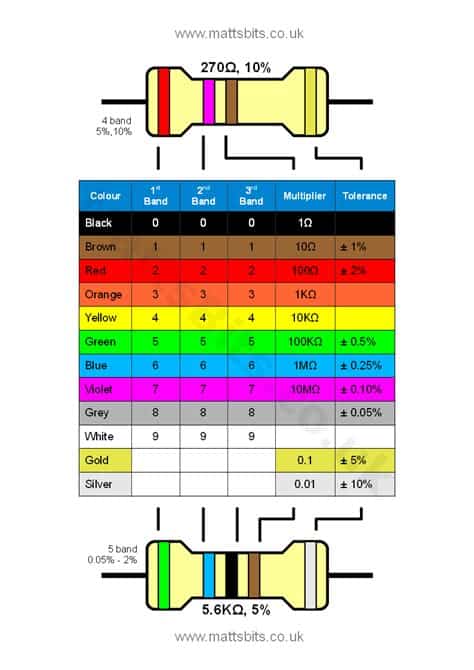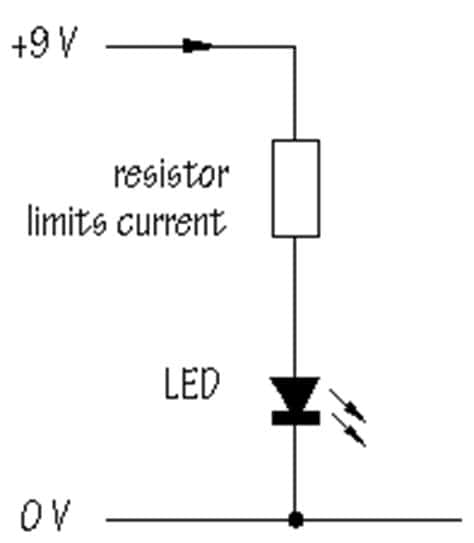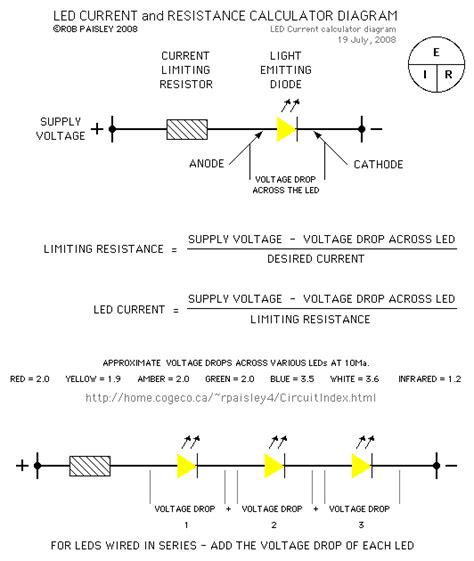Introduction to Current-Limiting Resistors
Current-limiting resistors are essential components when designing circuits with light-emitting diodes (LEDs). These resistors help regulate the current flowing through the LED, ensuring that it operates within its specified limits and prevents damage due to excessive current. However, there is a common question among electronics enthusiasts and beginners: Can you omit the current-limiting resistor if you’re using a power supply that matches the LED’s voltage? In this article, we will explore this question in detail and provide guidance on the proper use of current-limiting resistors in LED circuits.
Understanding LED Characteristics
Before diving into the discussion about current-limiting resistors, it’s crucial to understand the basic characteristics of LEDs. LEDs are semiconductor devices that emit light when an electric current passes through them. They have a specific forward voltage drop (Vf) and a maximum forward current rating (If). The forward voltage drop is the voltage required to overcome the LED’s internal resistance and allow current to flow, while the maximum forward current rating is the highest current the LED can safely handle without being damaged.
| LED Color | Typical Forward Voltage (Vf) | Typical Forward Current (If) |
|---|---|---|
| Red | 1.8V – 2.2V | 20mA |
| Green | 2.1V – 2.5V | 20mA |
| Blue | 3.0V – 3.4V | 20mA |
| White | 3.0V – 3.4V | 20mA |
Table 1: Typical forward voltage and current values for common LED colors.

The Role of Current-Limiting Resistors
Current-limiting resistors play a crucial role in protecting LEDs from excessive current. When a voltage is applied to an LED, it will draw as much current as the power supply can provide. If this current exceeds the LED’s maximum forward current rating, it can cause permanent damage to the LED. The current-limiting resistor is placed in series with the LED to limit the current flowing through it, ensuring that it stays within the safe operating range.
The value of the current-limiting resistor is calculated based on Ohm’s law, which states that the voltage across a resistor is equal to the product of the current flowing through it and its resistance. The formula for calculating the resistor value is:
R = (Vs – Vf) / If
Where:
– R is the resistance of the current-limiting resistor
– Vs is the supply voltage
– Vf is the LED’s forward voltage drop
– If is the desired forward current
For example, if you have a 5V power supply, a red LED with a forward voltage drop of 2V, and you want to limit the current to 20mA, the resistor value would be:
R = (5V – 2V) / 20mA = 150 ohms

The Myth of Matching Voltage Power Supplies
A common misconception is that if you use a power supply that matches the LED’s forward voltage drop, you can omit the current-limiting resistor. The reasoning behind this is that since the supply voltage is equal to the LED’s forward voltage, there will be no excess voltage to cause excessive current flow. However, this assumption is incorrect and can lead to LED damage.
The forward voltage drop of an LED is not a constant value; it can vary slightly due to manufacturing tolerances, temperature changes, and other factors. Even a small difference between the supply voltage and the LED’s forward voltage can result in a significant increase in current flow. Moreover, power supplies are not perfect and may have slight voltage fluctuations or ripples that can cause the voltage to exceed the LED’s forward voltage momentarily.
Example Scenario
Let’s consider a scenario where you have a 2V power supply and a red LED with a typical forward voltage drop of 1.8V. You might think that since the supply voltage is close to the LED’s forward voltage, you can directly connect the LED to the power supply without a current-limiting resistor. However, let’s see what happens in this case.
Assuming the LED’s forward voltage drop is exactly 1.8V, the current flowing through the LED would be:
I = (2V – 1.8V) / 0 = ∞ (infinite)
In reality, the LED’s forward voltage drop is not exactly 1.8V, and the LED has a small internal resistance. Let’s say the actual forward voltage drop is 1.7V, and the internal resistance is 10 ohms. The current flowing through the LED would be:
I = (2V – 1.7V) / 10 ohms = 30mA
This current is significantly higher than the LED’s typical forward current rating of 20mA, which can lead to overheating and damage to the LED.

Best Practices for Using Current-Limiting Resistors
To ensure the longevity and proper functioning of LEDs in your circuits, it is always recommended to use current-limiting resistors, regardless of the power supply voltage. Here are some best practices to follow:
-
Calculate the appropriate resistor value: Use the formula mentioned earlier to calculate the resistor value based on the supply voltage, LED’s forward voltage drop, and desired forward current. If you’re unsure about the LED’s specifications, refer to its datasheet or consult the manufacturer.
-
Use resistors with adequate power rating: The current-limiting resistor will dissipate power in the form of heat. Ensure that the resistor’s power rating is sufficient to handle the power dissipation. The power dissipated by the resistor can be calculated using the formula:
P = (Vs – Vf) * If
Where P is the power dissipated by the resistor in watts.
-
Consider using a variable resistor: If you want to adjust the brightness of the LED, you can use a variable resistor (potentiometer) instead of a fixed-value resistor. This allows you to control the current flowing through the LED and achieve different brightness levels.
-
Use a constant current driver for multiple LEDs: When using multiple LEDs in a circuit, it is often more efficient to use a constant current LED driver instead of individual current-limiting resistors. LED drivers provide a regulated current source and ensure even current distribution among the LEDs.
FAQ
-
Q: Can I use a single current-limiting resistor for multiple LEDs connected in parallel?
A: No, it is not recommended to use a single resistor for multiple LEDs in parallel. Each LED should have its own current-limiting resistor to ensure proper current regulation and prevent uneven current distribution among the LEDs. -
Q: What happens if I use a resistor with a higher value than calculated?
A: Using a resistor with a higher value than calculated will reduce the current flowing through the LED, resulting in lower brightness. However, it is safer to use a slightly higher resistor value than a lower one to ensure the LED is not overloaded. -
Q: Can I use a current-limiting resistor with a voltage source higher than the LED’s forward voltage?
A: Yes, you can use a current-limiting resistor with a voltage source higher than the LED’s forward voltage. The resistor will dissipate the excess voltage as heat, ensuring that the appropriate current flows through the LED. -
Q: Are there any alternatives to using current-limiting resistors?
A: Yes, there are alternative methods for current regulation in LED circuits, such as using constant current LED drivers or active current-limiting circuits. These methods provide more precise current control and are often used in professional lighting applications. -
Q: Can I use a current-limiting resistor with AC power supplies?
A: No, current-limiting resistors are designed for use with DC power supplies. If you want to use LEDs with AC power, you need to use an AC-to-DC converter or rectifier circuit to convert the AC voltage to DC, and then use a current-limiting resistor with the DC voltage.
Conclusion
In conclusion, omitting a current-limiting resistor for an LED, even when using a matching voltage power supply, is not recommended. The current-limiting resistor plays a crucial role in regulating the current flowing through the LED and preventing damage due to excessive current. Always calculate the appropriate resistor value based on the LED’s specifications and the supply voltage, and follow best practices when designing LED circuits.
By understanding the importance of current-limiting resistors and using them correctly, you can ensure the longevity and optimal performance of your LED projects. Remember, taking the time to properly design and implement current regulation in your circuits will save you from potential LED failures and frustration in the long run.

No responses yet